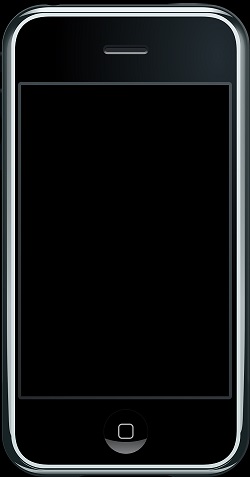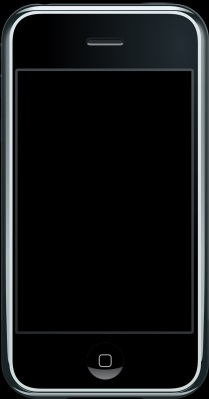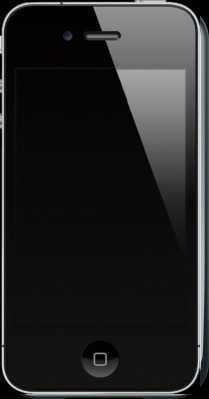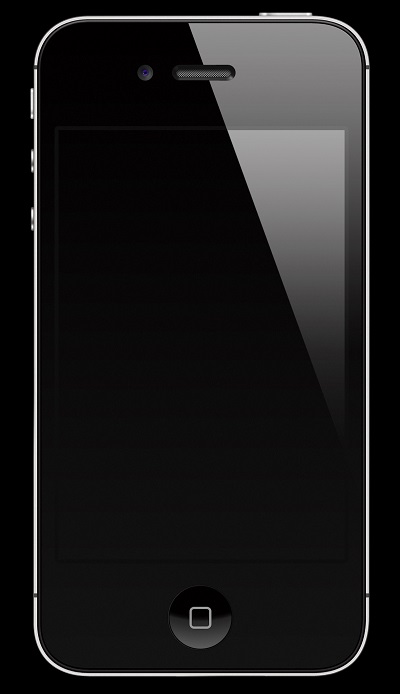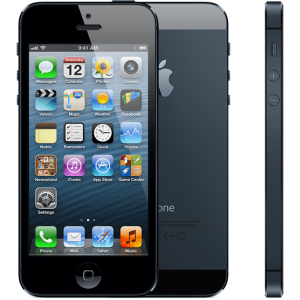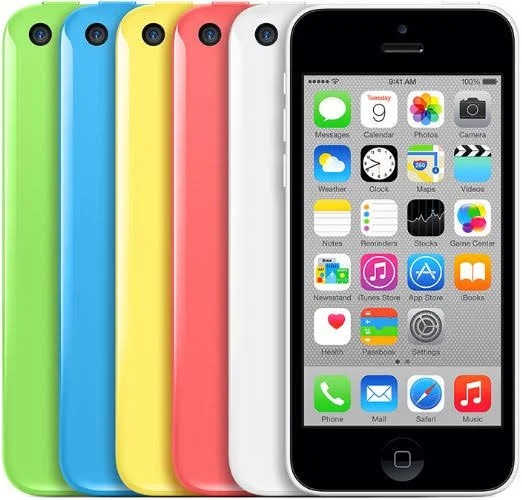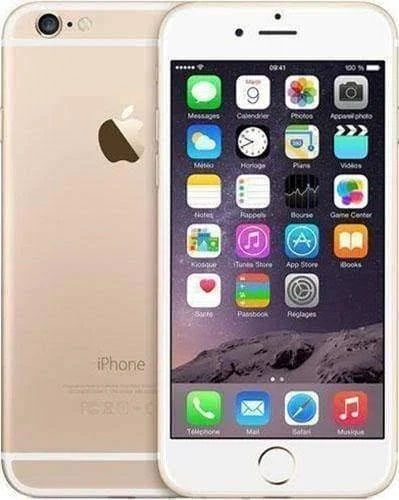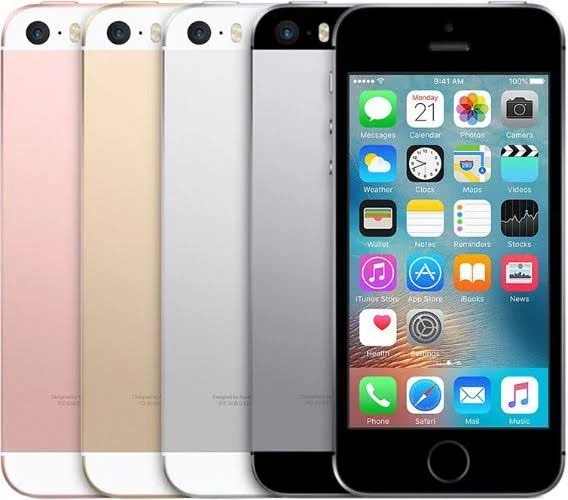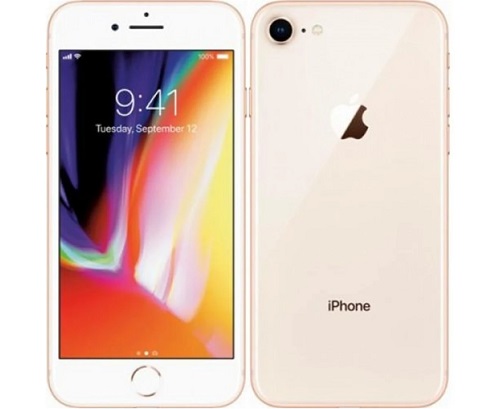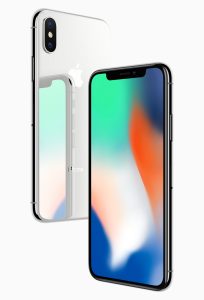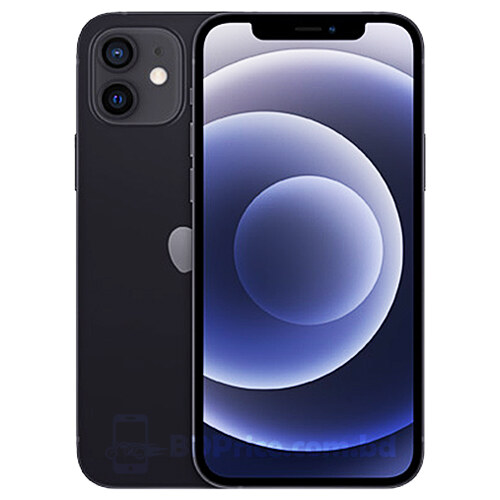With the iPhone SE 2020 or 2nd generation being released in April 2020 we thought this would be a good time to review all the iPhone models and their release dates. Do you remember all of these phones?
iPhone Original
Release date: June 29th 2007
Slogan: Apple reinvents the phone.
The first iPhone was introduced by Steve Jobs in June 2007. It was truly the first of its kind. Jobs himself described it as three devices in one – “an iPod, a phone and an internet communicator”.
This first-generation iPhone had a 3.5-inch screen with a 320 x 480-pixel resolution. The camera which was considered one of the best phone cameras in its time was only 2MP. The phone came with 8GB of storage.
Positive – Touchscreen. Great camera. Web browser. Many attributes in one device.
Not-so-positive – Third party apps were not allowed yet.
iPhone 3G
Release date: July 11th 2008
Slogans: The iPhone you’ve been waiting for, The first phone to beat the iPhone, Twice as fast, for half the price, 25,000 apps. And counting
Just the following summer – July 2008, brought in the next generation iPhone. The iPhone 3G was considered drastically different from its predecessor. 3G connectivity, lower price and third-party apps were some of the major developments.
The lower price was mainly due to the replacement of the metal back with plastic. Looks wise it was also more rounded in the back and thinner in size.
Positive – High speed internet connectivity due to 3G. Lower price. Third party apps allowed. Option of a white model.
Not-so-positive – No GPS. No 3G data. No video recorder.
iPhone 3GS
Release date: June 19th 2009
Slogan: The fastest, most powerful iPhone yet
8GB 3GS Slogan: More to love, less to pay
The third generation iPhone – the iPhone 3GS was launched in June 2009. The “S” stood for “speed”. As far as the outer appearance is concerned, it was very similar to the iPhone 3G. The only change being the iPhone name in silver on the back of the device.
The real enhancements were the better camera with video recorder, storage options and speed. It almost felt like a better version of the iPhone 3G itself.
Positive – Better speed. Better camera. Option to increase storage. Cut, copy, paste feature in the iOS.
Not-so-positive – No major improvements over its predecessor.
iPhone 4
Release date: June 24th 2010
Slogan: This changes everything. Again
June 2010, brought with it the iPhone 4. The fourth generation of this smartphone was considered a major upgrade to its previous model. The changes in the appearance included a body covered in glass and a flatter structure. It came with a 5MP camera and introduced the forward-facing camera starting the era of the “selfie”. FaceTime was introduced along with the iPhone 4 too. Some customers did experience iPhone breakages due to the glass back. The iPhone 4 and 4S utilised a MicroSIM card.
Positive – Forward-facing camera with HD video recording. FaceTime. Great looking phone.
Not-so-positive – Easily shattered due to glass back. High price.
iPhone 4s
Release date: October 14th 2011
Slogan: The most amazing iPhone yet
Launched in the October of 2011, the iPhone 4S introduced Apple’s voice assistant Siri. Other than that, this iPhone model was not greatly different from its predecessor. The changes were mainly improvements on already existing features.
Externally the iPhone 4S looked the same as the iPhone 4. It came with Apple’s new A5 processor and better graphics. It had a 8MP camera with 1080p video recording capabilities.
Positive – Siri. Better camera.
Not-so-positive – Nothing specific.
iPhone 5
Release date: September 21st 2012
Slogan: The biggest thing to happen to iPhone since iPhone
iPhone 5 was launched in September 2012. It had a 4-inch screen and a all-aluminum design. There was also a structural change in the charging port. All previous iPhones had used Apple’s 30 pin charging adaptor, with the iPhone 5 the lightning chargers were introduced. This lightning port remains in use today up to the and including the iPhone X. The iPhone 5’s major talking points however were, it’s light weight body (20% lighter than the 4s and lightest iPhone ever) and the new design of the earphones. iPhone 5 also came with a 8 MP camera with HD FaceTime capability. As a space saving measure, the iPhone 5 and later iPhones make use of a Nano SIM card. Click here to see our Lightning chargers.
Positive – Light in weight. Big screen size. HD FaceTime.
Not-so-positive – Harder to use one-handed due to the taller screen. iOS upgrade was needed.
iPhone 5S/5C
Release date: September 20th 2013
iPhone 5S Slogan: Forward thinking
iPhone 5C Slogan: For the colorful
Exactly a year later, September 20th 2013, came the iPhone 5S and 5C launch. This time Apple attempted to make a budget iPhone with the iPhone 5C. It helped them compete with the more affordable Android phones in the market. Other than having a bigger battery and a plastic body, the iPhone 5C was a replica of the iPhone 5. It did bring in some much needed colour to the black-white-silver world of iPhones.
On the other hand, the 5S came with some major improvements. It had a better camera, fingerprint reading capability and a more powerful processor. They also offered a Gold option.
Positive – Budget friendly option with 5C. Introduced the fingerprint reading capability with 5S.
Not-so-positive – Nothing in particular.
iPhone 6/6 Plus
Release date: September 19th 2014
Slogan: Bigger than bigger
The iPhone 6 and 6 Plus were unveiled together in September 2014. These iPhones had big alterations in both design and features. First the screen size went from 4 to 4.7 inches in the 6, while the 6 Plus had a 5.5 inch screen. Then the resolution was improved, image quality was flawless despite the screen size increase and lastly the iPhone structure was more ergonomically friendly. The iOS 8 was released with this launch. Apparently, these were the phones that broke the company’s records for pre-orders on the night of the launch itself!
This launch also brought in Apple Pay and a new improved 8 MP camera. Both phones included NFC chips for the Apple Pay feature. They used a new technology called “dual domain pixels” which contributes to the amazing images on the screen.
Positive – Many! Bigger screen. Ergo friendly. Apple Pay. Improved image quality.
Not-so-positive – iOS 8 had issues and bugs come up soon after the launch
iPhone 6S/6S Plus
Release date: September 25th 2015
Slogan: The only thing that’s changed is everything
Slogan: One powerful phone
September 2015 welcomed the iPhone 6S and 6S Plus. As far as external features are concerned, these phones are exactly the same as their predecessors. The same screen sizes, resolutions and all metal bodies. The only change is the additional choice of colour – the pretty Rose Gold.
Internally however, the phones have a lot to be talked about. The cool new “3D Touch” feature in these iPhones lets the user choose functionality using the pressure of their fingers. For example, if a user presses hard on a topic on the screen it will bring up additional menus or open in a different window. Other than this, there is the new A9 chip, the 12 MP camera with Live Photo feature and the 7000 series aluminum bodies.
Positive – 3D Touch. Better processor. New choice of colour.
Not-so-positive – Nothing much.
iPhone SE
Release date: March 31st 2016
Slogan: A big step for small
Apple made another mid-year launch with the iPhone SE in March 2016. It was marketed as a ideal choice for someone looking for a smaller sized, budget phone.
The iPhone SE had a 4-inch screen, lower cost and great battery life. All other physical features were like the iPhone 5S. Inner specifications were those of the iPhone 6S. It has a 12MP camera, iOS 9 and 64 GB storage capacity.
Positive – Budget friendly. Good battery.
Not-so-positive – Nothing worth mentioning.
iPhone 7/7 Plus
Release date: September 16th 2016
Slogan: This is 7
At the yearly launch in September 2016, Apple presented the iPhones 7 and 7 Plus. A noteworthy feature of these phones is the outstanding camera with telephoto lens that gives the phones the capacity to take 2x zoom photos without any compromises in quality. Both these phones are waterproof, which is definitely a great quality to have. Additional changes include the new lightening connector for the headphones in place of the headphone jack and no more “home” buttons.
The 7 Plus comes with two rear cameras to aide taking great quality portrait photos.
Positive – Greatly improved camera. Waterproof.
Not-so-positive – Some customers are unhappy with the design of the new headphones.
iPhone 8/8Plus
Release date: September 22nd 2017
Slogan: A new generation of iPhone
In September 2017, Apple skipped the iPhone 7S/7S Plus and launched the iPhone 8/8 Plus models instead.
The showstopper of this launch was – Wireless Charging capability! Other improvements include a 12 MP camera with dual snapper on the rear of the phones and a A11 Bionic processor.
Positive – Wireless charging capability.
Not-so-positive – No big deal breakers here – but, the phones look very similar to the 7/7 Plus models and the resolution of the screen is the same.
Click here to view our wireless chargers.
iPhone X
Release date: November 3rd 2017
Slogan: Say hello to the future
Shortly after the iPhone 8/8 Plus models, was the launch of the iPhone X. Popularly known as the “most important iPhone ever launched”, the iPhone X launch on 3 November 2017. The name is pronounced as iPhone “Ten” not the letter “X” the “X” being number 10 in Roman numerals. The iPhone X celebrates the iPhone’s tenth anniversary.
There are significant changes in the physical appearance of the iPhone with the iPhone X. The 5.8-inch screen with Super Retina HD display is just the start of it. There is no “Home” button on this phone and the swipe up gesture from the bottom of the screen is used in place of it. No more fingerprint scanning either. Face ID using the facial recognition technique is used for identification. This iPhone introduces OLED display in iPhones. Last but definitely not the least – this is the most expensive iPhone ever.
Positive – Bigger screen. OLED display. Facial recognition.
Not-so-positive – Expensive.
iPhone XS/XS Max
Release date: September 21, 2018
Slogan: Welcome to the big screens
Releasing less than a year after the iPhone X, the iPhone XS and XS Max is the continuation of that line of phone. Sitting at the same price the original iPhone X launched at for 64 GB of memory, the XS is still a very expensive phone. The XS has a 5.8” Super Retina HD display, while the XS Max sits at 6.5”. There are no other differences between the two phones.
The iPhone XS/XS Max boasts having the most accurate color display in the phone industry. The OLED screen also features High Dynamic Range and the most durable screen in any iPhone yet. The stainless steel now also has a gold variant added on to the normal Apple silver and black and is more resistant to water and dust.
This is the most powerful iPhone yet. The iPhone XS/XS Max have 4 GB of RAM and the A12 Bionic chipset that Apple was talking up during its announcement is no joke. That chipset makes the iPhone XS the definitive way to witness augmented reality capabilities on a phone. The Neural Engine makes the iPhone XS the fastest phone on the market, while also learning what the user wants. It is an 8-core system that speeds all processing up, while also having efficiency cores available for power usage savings.
The camera has also been updated, although it might be difficult to see firsthand. The pixels have been enlarged to allow a greater sensitivity to light for better low-light photography. The camera also has double the speed sensors over the original iPhone X. This allows it to have Smart HDR, and portrait mode allows you to control the amount of depth to your photos. Video recording has extended dynamic range for up to 30 fps.
Face ID and wireless charging have returned from the original iPhone X and the phone is now resistant to up to 2 meters of water, as compared to the 1 meter for the original. The storage size has been extended as well, coming available at 64 GB, 256 GB, or 512 GB. While still not a top of the line battery, the iPhone XS/XS Max do outlive the iPhone X, lasting up to a half hour longer.
While the iPhone XS/XS Mas are mostly standard improvements upon a phone from a year ago, they have now taken the place of their older brother. The iPhone X has been discontinued.
Positive: Most powerful iPhone yet, faster, more durable
Not-so-positive: Very expensive, With the original iPhone X being discontinued so soon, these are now your only choice for a top of the line iPhone, no headset adapter for 3.5 mm jack fans included
iPhone XR
Release date: October 26, 2018
Slogan: Brilliant. In every way
The iPhone XR is the “cheap” version of the iPhone X line. If you consider $750 cheap compared to the $1,000 start for the XS. While it may be considered a downgrade when compared to the XS and XS Max, the iPhone XR is still a very capable phone.
The iPhone XR is powered by the A12 Bionic chipset and the next generation Neural Engine that also resides in the XS and XS Max. This allows the XR to be a very fast processing phone, while only having 3 GB of RAM compared to the 4 in the XS. It has a 6.1” Liquid Retina HD display and supports Face ID and wireless charging. With 64GB, 128GB or 256GB storage options, there is a little more manageable decisions to be made for your storage. With the XS, you either have 64 GB, which may be too little, 256 GB which may be too much, or 512 GB which can seem astronomical for a phone. The choice for 128 GB is a good middle ground.
To cut cost on this phone, the iPhone XR has the only one camera when compared to the dual system in the XS. While it still gives a good picture, when compared to the XS it cannot zoom in as close and controlling the amount of depth in the background is handled differently than with the XS. The iPhone XR uses its single-lens camera and Neural Engine to keep people in the foreground in sharp focus against a blurred background. The XR can give incredible detail and brightness in its photos, but the XS and XS Max are just on another level having the extra camera sensor.
Like the other iPhone X models, the XR has 4K video recording at 24 fps, 30 fps, or 60 fps and 1080p HD video recording at 30 fps or 60 fps. Smart HDR is present as in the XS models, which allows it to capture better darks and lights in its video.
The Liquid Retina display is an LCD screen that is supposed to feel as close to an OLED screen as LCD can get. The entire front is all screen just like the X and XS, but a little larger. It is also the most durable LCD screen ever with the added benefit of being water and dust resistant. While the screen is not capable of handling HDR, it is still a crisp picture. Just do not compared the picture with the XS.
The phone also comes in multiple colors. As opposed to the gold, silver, and black for the XS, the XR comes in blue, white, black, yellow, coral, and red. iOS 12 is still the operating system used in the iPhone XR allowing for some cool augmented reality experiences. Popular AR experiences like Memoji work great on the phone, allowing you to put cartoonish faces on yourself while in a Facetime call.
The iPhone XR’s battery is where it is going to sell itself for a lot of people. Compared to the iPhone 8 Plus, the XR can last an hour and a half longer. Compared to the XS, it can handle talk time and audio playback five hours longer and internet use three hours longer.
While still an expensive phone, the iPhone XR is a great alternative for people who do not need the absolute top of the line phone when it comes to camera and display. It still has a great, durable screen and a very good battery for ¼ of the price for the iPhone XS.
Positive: Great battery, very durable, multiple color choices
Not-so-positive: Still an expensive phone, when compared with the XS not as powerful both display and camera-wise
iPhone 11
Release date: September 20, 2019
Slogan: Just the right amount of everything
Apple announced on the 10th September (USA time) their 2019 range of iPhones. Preorders for these devices commencing on 13th September 2019 and a launch date of 20th September 2019. It was widely thought that Apple would move to USB-C charging (especially after the 2018 iPad Pros making use of the USB Type C connector) Apple has stayed with their Lightning charging connectors.
The iPhone 11 was inspired by the XR to be a “cheaper” iPhone that adds more power and uses than other phones. The new iPhone come in six different colors: Purple, White, Yellow, Green, Black and Product Red. Once again, no 3.5 mm jack will be in the devices. Like the iPhone XR that the 11 base model is supposed to be a reference to, it has a 6.1-inch Liquid Retina display. Apple is touting the iPhone 11 to have the “toughest glass in a smartphone” and water resistant up to 2 meters for up to a half hour. The base model will have 64GB, 128GB, or 256GB storage.
iPhone 11 Pro And iPhone 11 Pro Max
Release date: September 20, 2019
iPhone 11 Pro Slogan: Just the right amount of everything
iPhone 11 Pro Max logan: The Most Advanced iPhone Yet
The iPhone 11 Pro has a 5.8 inch Super Retina XDR display with the Pro Max at 6.5 inch put together in a textured matte glass and stainless-steel design. It has 458 pixels per inch and puts out better dark colors than iPhones in the past have done. The Pro’s battery will last four hours longer than the iPhone XS and the Pro Max will last five hours longer than the XS Max. Both phones come with a 18W faster adapter. It is water resistant up to 4 meters for a half hour. Both the Pro and Pro Max come in Gold, Silver, Space Grey, and Midnight Green.
The iPhone 11 (and its Pro brothers) will have the newest Apple processor: the A13 Bionic. According to Apple it will use power in a more efficient way to save battery life, allowing 17 hours of uninterrupted video playback. Apple says it has the fastest CPU and GPU in any smartphone.
For the base model, the camera has received a big update from the iPhone XR. For the first time on the “cheaper” model, the camera has a dual lens sensor. A 12MP wide camera with a 26mm lens is accompanied by another 12MP ultra-wide camera with 120 degrees field of view. On the video side of things, the camera records at 4K resolution, 60 fps. According to Apple, if you zoom in while recording the audio will zoom in as well, focusing on the subject making the noise. The 2MP TrueDepth selfie camera will also have 4K resolution for the first time.
As for the 11 Pro and iPhone 11 Pro Max, the big draw to jump from the base iPhone 11 to the Pro is the triple camera set-up. Triple 12MP Ultra-Wide, Wide, and Telephoto cameras all with Night mode are equipped here. The telephoto lens gets you the best zoom-in while the ultra-wide lens gives you 4x the area of the telephoto lens. That telephoto lens also gives the phone 40% more light capture.
The A13 Bionic set processes video in real-time and shoots in 4K, 60 fps like the base model. The Pro model however will let you edit videos like you edit photos. You can rotate, crop, auto-enhance, add filters, and more to your shoots.
Smart HDR brings out more colors in your photos and videos. The camera in the iPhone 11 Pro will show more realistic skin tones and will automatically capture detail between the subject and the background.
Night Mode has been introduced to all versions of the iPhone 11. Without the use of flash, the A13 Bionic chip allows videos and photos in dark areas to appear lighter on the phone with better colors.
Positive: Better battery, base model cheaper than the XR, very durable
Not-so-positive: Still expensive phones when you get the Pro or Pro Max
iPhone SE 2020
Release date: April 24, 2020
iPhone SE Slogan: Lots to love. Less to spend

The iPhone SE 2020 aka iPhone SE or iPhone SE (2nd generation), is the first SE model of iPhone since 2016, being the most budget friendly device Apple has announced in years. Releasing on April 24th, 2020, the phone starts out at $749 in Australia, a very fair price considering the SE 2020 has the same A13 Bionic processor that runs the iPhone 11 Pro, the fastest chip yet in a smartphone. With the A13 Bionic inside, the SE 2020 is guaranteed to be supported for at least three years.
The phone has a 4.7-inch Retina HD screen with 1,334×750 resolution and 326 ppi density. It comes available in red, black, or white, and storage-wise starts out at 64 GB, but is also available with 128 or 256 GB.
The iPhone SE 2020 has a 12-megapixel camera on the back and a 7-megapixel front-facing camera, that when combined with the processor is best at taking portrait photos. It will focus on the subject of the shot while blurring the background, no matter which side you are shooting with. You can control how much the background is blurred both before and after you take the picture. You also will have access to six lighting effects, Studio Light, Natural Light, Contour Light, Stage Light Mono, Stage Light, and High-Key Light Mono.
Smart HDR makes its way over from the most recent iPhone releases, bringing out more colors in your photos and videos with 4K resolutions. It also relights photos to capture more natural looking contours and skin tones, finessing highlights and shadow detail in the background.
Other features that make their way to the iPhone SE 2020 are Touch ID, QuickTake, water resistance up to 1 metre for 30 minutes, and a battery that supports up to 13 hours of video on a single charge, with fast charge capabilities.
Positives: A13 Bionic makes its way over, cheaper price (for Apple products)
Not-so-positives: Not as impressive of a camera or battery as recent phones, no expandable storage
The iPhone 12 Lineup 2020
2020 has been a long year, and for the tech world, it seemed to get even longer when Apple postponed their iPhone 12 event. But finally, on October 13th 2020 during the Hi Speed event, the world got to see Apple’s latest line of flagship devices; the standard iPhone 12, iPhone 12 mini, iPhone 12 Pro, and iPhone 12 Pro Max.
These devices featured lots of changes, starting with the design; they are boxy with flat edges. They also ship in packaging half the size of last year’s models, and inside the box, there is no charging brick, just a single lightning cable.
As with every other iPhone flagship launch, Apple threw in the phrase, “this is the best iPhone yet.” Of course, they are never wrong, and this year is no different.
iPhone 12
Slogan: Blast Past Fast
Release Date: October 23rd 2020
The iPhone 12 is Apple’s base flagship model, and it more or less introduces everything new on the iPhone this year; starting with the fresh design. Users now get smooth and flat edges, compared to the rounded edges of previous generations which not only make for a more compact feel but also give the iPhone 12 a gorgeous look. Materials for the body are an aluminium frame and glass on the front and back.
Another nice change to the device is the size; it is smaller, thinner, and lighter than last year’s base flagship model. Naturally, this would mean a shrink in display size, but that’s not the case; the new iPhone 12 still maintains the same 6.1” display as the iPhone 11 despite getting a size cut.
About the display, it has been upgraded to an OLED panel, with double the resolution; 2532 x 1170p. This display can support HDR viewing and on average, is fantastic for day to day viewing. It is protected by the new Ceramic Shield that Apple claims is the toughest glass on any smartphone.
Apple hyped the whole line up around one thing- speed. Therefore, the iPhone 12 is not only 5G enabled; it is optimized to take full advantage of this new generation of broadband cellular network. Another speed feature on the device is the new A14 Bionic chipset. At the time of writing, the 14 is one of two chips in the world built on a 5nm process. This means that the A14 is the fastest mobile chipset in the world; with 50% faster GPU and CPU speeds and an 80% faster Neural engine than other chipsets available at the time of launch.
The device has a dual camera set up; a 12MP ultra-wide and a 12MP wide lens, with better night mode low light performance, and computational photography. MagSafe was another new feature introduced to the iPhone 12. This feature uses rings of magnets built into the back of the iPhone for better wireless charging. It also creates a new ecosystem of magnetic accessories to be used with the iPhone 12. You can view our cases for iPhones and iPad here.
Nonetheless, the iPhone 12 was faced with a little bit of criticism, since it ships with no charging brick in the box. The assumption by Apple was that there are already enough charging bricks out there from previous iPhones. Although this is correct, the fact that the iPhone 12 comes with a USB-C to lighting cable means that a large number of these bricks are virtually useless.
The iPhone goes for AU$1,349 for the 64GB model, AU$1,429 for the 128GB model, and AU$1,599 for the 256 GB variant.
iPhone 12 Mini
Slogan: The world’s smallest, thinnest, lightest 5G phone.
Release: November 13th 2020
Long before the launch event, there had been rumours of a smaller iPhone 12, which Apple confirmed when they announced the iPhone 12 mini. Despite its small size, the 12 mini is quite an impressive piece of technology.
Apple achieved quite a lot with this device. Their bleeding edge technology allowed them to make it smaller than the iPhone 8, but with a bigger 5.4” edge to edge display. Therefore, the only trade-off fans of the mini have to contend with is the smaller screen size (5.4” to the standard iPhone 12’s 6.1”) and the battery. Every other spec of the iPhone 12 mini is similar to the base model.
The device starts at AU$1,199 for the 64GB model, AU$1,279 for the 128GB and AU$1,449 for the 256GB model.
iPhone 12 Pro
Slogan: It’s a leap year.
Release: October 23rd 2020
Although both devices feature the same specs, the pro model brings a few extra features to the already impressive standard iPhone 12. For instance, it has a stainless-steel frame in place of the aluminium one. It also upgrades the double camera system at the rear to a triple camera set up by adding a telephoto lens. There is also a Lidar sensor that functions excellent when it comes to augmented reality (AR).
The iPhone 12 Pro also starts at a higher capacity, 128GB, than the standard and the mini. It starts at AU$1,699 for the 128 GB capacity, AU$1,869 for 256GB, and AU$2,219 for the 512GB model.
iPhone 12 Pro Max
Slogan: Camerus maximus.
Release: October 13th, 2020.
The iPhone 12 Pro Max is the best flagship Apple has for 2020. The device improves on the iPhone 12 Pro in two areas, display size and the cameras. Apart from these two features, all other specifications are the same.
Starting with the display, it has a massive 6.7” OLED display which is super immersive when watching videos and playing games. But the headlines of this device are the impressive camera specs.
Compared to the Pro, the Pro Max has a larger telephoto lens (65mm to 52mm). The camera upgrades don’t end there; for the first time, users can capture and edit videos in Dolby Vision. There is also a new image format from Apple, Apple Pro Raw, that captures little tweaks of data. Therefore, the overall photo and video output of the Apple Pro Max is the best in a smartphone.
The 128GB model retails at AU$1,849, while the 256GB and 512GB models go for AU$2,109 and 2,369 respectively.
If you found this guide useful would you please leave us a comment below to let us know this was helpful. Also why not have a look at our iphone and ipad cases while you’re here.
iPhone 13 Series 2021
Generation: 15th
Release date: September 24, 2021.
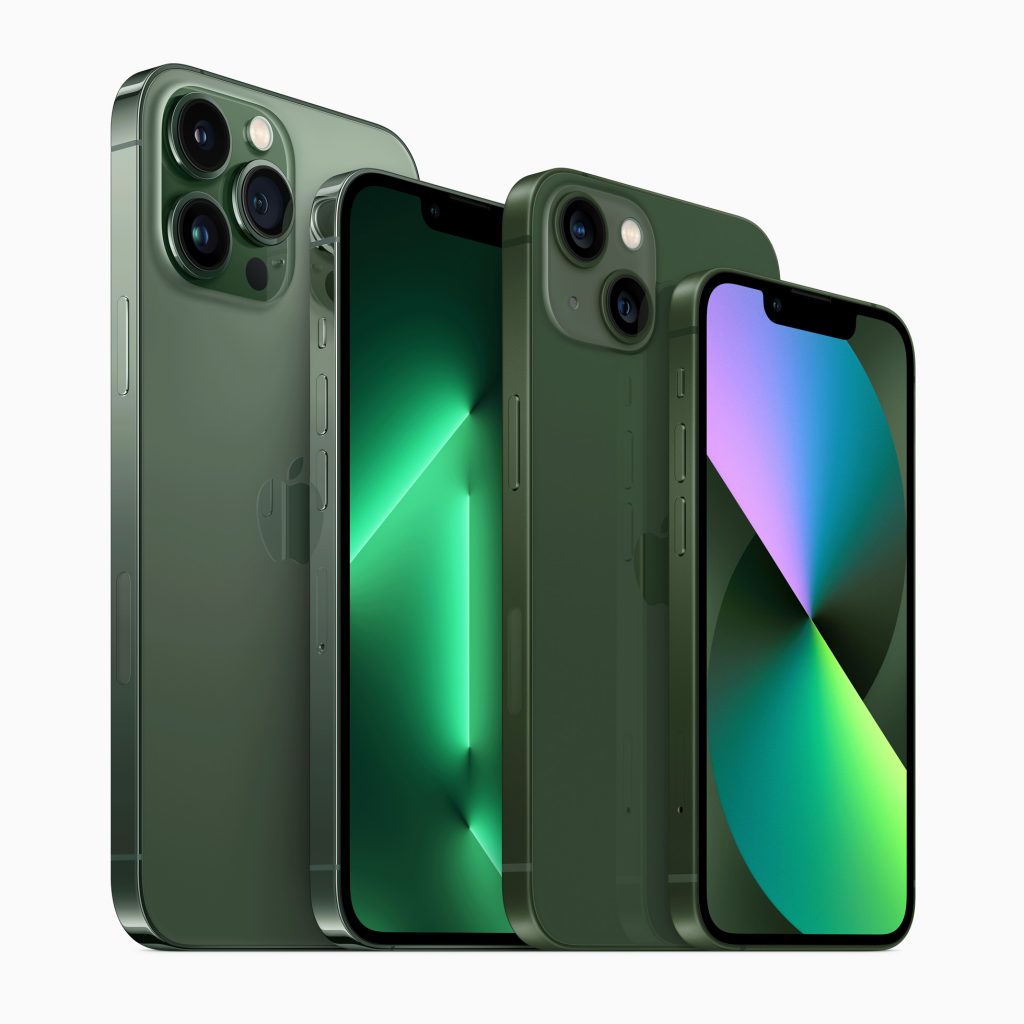
iPhone 13 and iPhone 13 mini are the newest iPhone models introduced by Apple on September 14, 2021. The iPhone 13 series is made up of 4 different models- the iPhone 13 and iPhone 13 mini at the more affordable end, and the iPhone 13 Pro and iPhone 13 Pro Max at the more expensive end. The iPhone 13 and iPhone 13 mini are ideal for those who don’t need pro-level camera features and are looking for a more affordable option. The iPhone 13 Pro and Pro Max are better suited for those who need professional quality camera features such as telephoto zoom and low light performance. No matter what your needs are, there is an iPhone 13 model that is perfect for you.
iPhone 13 is available for purchase, and many people wonder if it is worth upgrading from iPhone 12. The simple answer is yes! Even though iPhone 13 may not look much different from iPhone 12 at first glance, it has some significant upgrades. The iPhone 13 and iPhone 13 mini build upon the successful iPhone 12 with new cameras and longer battery life. The notch has been reduced in size, and the rear camera module now sits at a diagonal. In addition, the A15 processor brings more speed and efficiency to every task. The iPhone 13 and iPhone 13 mini are sure to hit iPhone users looking for slightly more power and performance.
iPhone users worldwide eagerly await the release of the iPhone 14, which is rumored to be coming out in 2022. While the standard models aren’t expected to gain many new features, the pro models are said to have several unique design tweaks and features. iPhone fans will have to wait a little longer to release the iPhone 14, but it will be worth it for the added features and improved design. Stay tuned for more information on the much-anticipated iPhone 14 release.
iPhone 13
Slogan: Your New More Superpower.
Release date: September 24, 2021.
iPhone fans rejoice! The latest iPhone 13 is finally here, and it comes packed with new features and improvements. iPhone 12 lovers will be happy to know that the new iPhone 13 is even better than its predecessor. The iPhone 13 sports a brand-new dual-camera system, the A15 Bionic chip, and bigger battery life. Its durable design and superfast 5G connectivity make it one of the most potent mini-phones on the market. If you’re looking for an iPhone that packs a punch but doesn’t break the bank, the iPhone 13 is the phone for you.
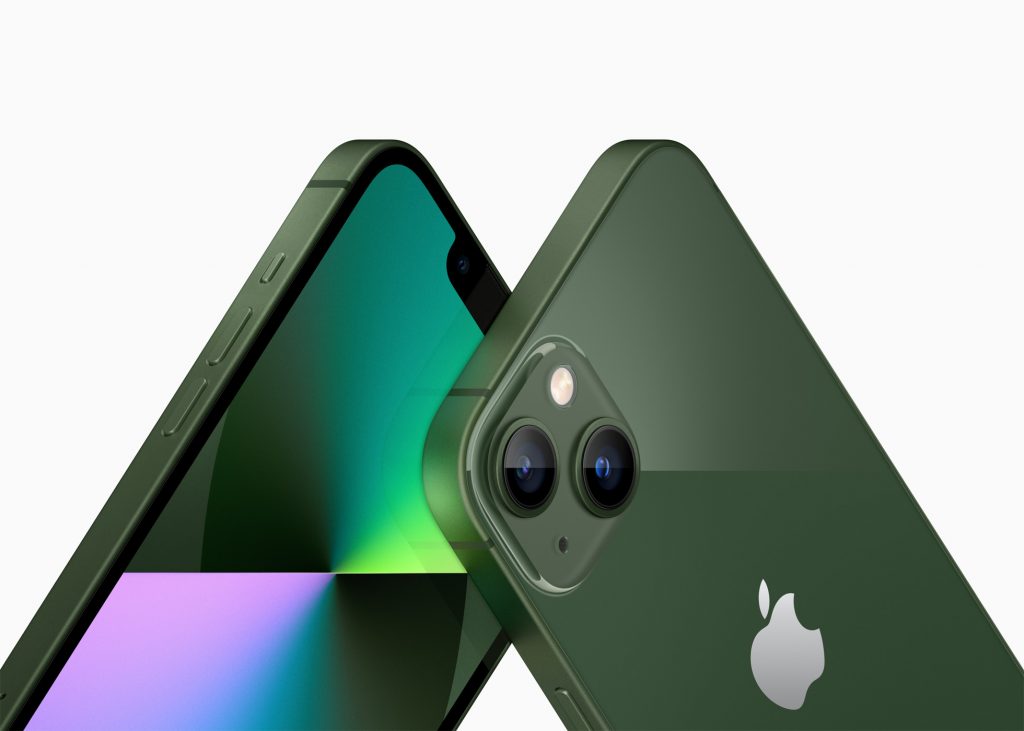
iPhone 13 models are nearly identical in design to the iPhone 12 models; iPhone 13 comes with a flat-edged aluminum enclosure, a glass back, and a 7.65mm thickness. iPhone 13 models will continue to use Face ID, but there are rumors that Touch ID may return in the power button. An upgraded camera system is expected to be one of the most significant changes for the iPhone 13.
iPhone 13 models are available in various colors, including pink, blue, midnight black, starlight silver/gold, and green. The new models feature Super Retina XDR Displays that are 28 percent brighter. The iPhone 13 also features a Ceramic Shield cover glass infused with nano-ceramic crystals for better protection from drops. iPhone 12 was the bestselling iPhone ever, and iPhone 13 looks to build on that success with even better features and performance. So, if you’re in the market for a new iPhone, check out the iPhone 13!
The new iPhone 13 rear camera is a game-changer. Its two lenses – a Wide and an Ultra-Wide – take your photography to a whole new level. The Wide camera has an aperture of f/1.6, which lets in 47% more light than the previous iPhone. This results in significantly improved low light performance. Plus, the new Sensor-Shift Stabilization ensures that your photos are always perfectly sharp – no matter the lighting conditions. iPhone photographers everywhere will be blown away by the new dual-lens rear camera!
iPhone users have always been able to take amazing pictures, thanks to the high-quality camera built into every iPhone model. With the iPhone 13, Apple has taken things to the next level with the addition of Cinematic Mode. This mode uses rack focus to smoothly shift focus from one subject to another, creating movie-style depth effects. The results are truly stunning, and iPhone users will now be able to capture professional-looking photos and videos with ease. The iPhone 13 is poised to revolutionize mobile photography thanks to Cinematic Mode.
iPhone 13 offers up to 2.5 hours more battery life than the iPhone 12, thanks to larger batteries and the more efficient A15 chip. iPhone 13 also features Smart HDR 4, which recognizes up to four people in a photo and optimizes the contrast, lighting, and skin tones. Deep Fusion, a carry-over from iPhone 12, also activates mid to low-light scenes to bring out texture and detail. As a result, iPhone 13 is not only more powerful but also more battery-efficient than its predecessor.
iPhone 13 Mini
Slogan: Your New More Superpower.
Release date: September 24, 2021.
iPhone 13 mini brings new cameras and longer battery life. iPhone 13 mini improves camera quality, and the A15 processor brings more speed and efficiency to every task. The notch has been reduced in size, and the rear camera module now sits at a diagonal. Thanks to the reduced size of the notch and the relocated earpiece speaker, iPhone13 can offer a free viewing experience that allows users to take full advantage.
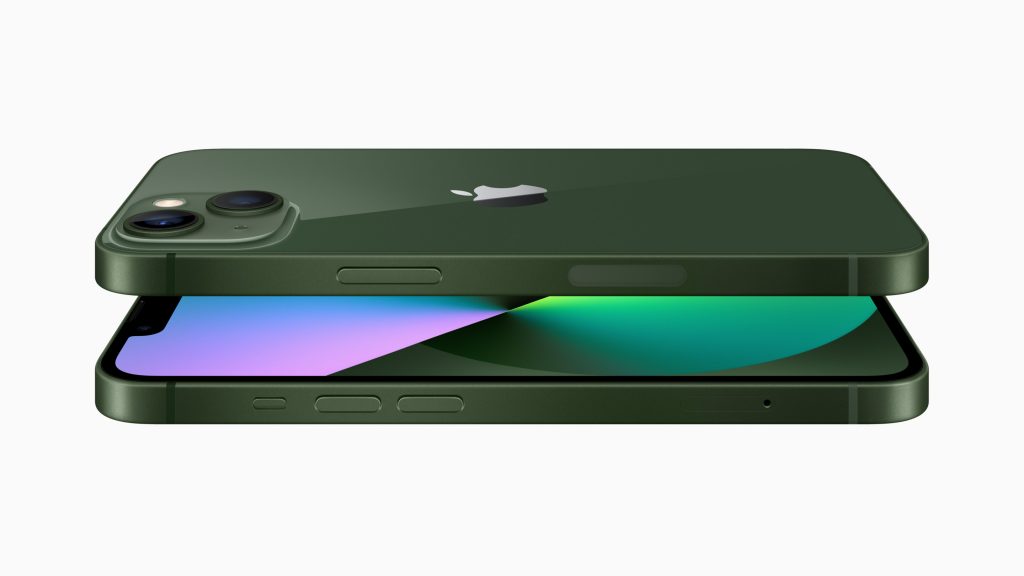
The iPhone 13 mini was released to both fanfare and criticism. Some people loved its smaller size, while others felt it was too small to be a flagship smartphone. The debate about its size spawned several articles and blog posts, with people taking sides on whether the iPhone 13 mini was a good or bad addition to Apple’s lineup. There’s no denying, however, that it’s a high-quality phone. It has all of the features of the iPhone 13.
iPhone 13 mini is the world’s smallest, thinnest, and lightest 5G smartphone. iPhone 13 mini packs iPhone 13’s advanced features into a stunning compact design. iPhone 13 mini has a 5.4-inch Super Retina XDR display. iPhone 13 mini and iPhone 12 mini may seem like identical twins at first glance, but there are some subtle differences between them. The iPhone 13 mini is ever-so-slightly larger and heavier than its sibling. iPhone 13 mini might not seem like much of an upgrade at first glance, but a closer look reveals a few key improvements.
First and foremost, the camera system has been updated. The iPhone 13 mini features a dual 12-megapixel camera system consisting of a Wide f/1.6 camera and an Ultra-Wide f/2.4 lens. This allows for 2x optical zoom out and 5x digital zoom. In addition, True Tone flash with Slow Sync has been added for improved low-light photography. Night Mode, Deep Fusion photography, Portrait Mode, and Portrait Lighting are all available. iPhone 13 mini features the most powerful chip ever in a smartphone, the A15 Bionic. This iPhone has new features and improvements that iPhone users will love. The Neural Engine is more powerful than ever, able to process 15.8 trillion operations per second. The Image Signal Processor has also been upgraded, providing even better computational photography for the iPhone 12.
The iPhone is a perfect example of a data-driven world. With iCloud and other cloud-based storage options, there is more space at our fingertips than ever. This cloud-based storage is one factor that allowed for a (relatively) smooth transition to SSDs in the Mac from spinning hard drives. It’s a paradox, but it’s one that we’re lucky to have. Thanks to the cloud, we can store more data than ever before and access it from anywhere in the world.
iPhone 13 Pro
Slogan: Oh So Pro
Release date: September 24, 2021.
The iPhone 13 Pro is Apple’s newest high-end pro-level flagship iPhone. The iPhone 13 Pro is being sold alongside the more affordable iPhone 13. The iPhone 13 Pro is the successor to the iPhone 12 Pro. The iPhone 13 Pro model is nearly identical to the iPhone 12 Pro models, featuring flat edges, a stainless-steel frame, and a textured matte glass back. The most significant difference between the iPhone 13 Pro and its predecessor is the increase in thickness (7.65mm). This increase is due to a new, larger camera sensor. The iPhone 13 Pro also features a new, more powerful A15 Bionic processor and increased battery life. Overall, the iPhone 13 Pro is an iterative upgrade from the iPhone 12 Pro, sure to please Apple fans.

iPhone 13 Pro features gorgeous OLED displays that are significantly brighter outdoors, thanks to a new technology called ProMotion. ProMotion adapts the iPhone’s refresh rate to match the content you’re viewing, whether it’s a fast-paced game or a detailed website. That means smoother scrolling and more responsive touchscreen input. The new iPhone 13 Pro models also support a more comprehensive range of display refresh rates, from 10Hz up to 120Hz. So, whether you’re watching a movie or playing a game, you’ll enjoy a smooth and responsive experience.
iPhone 13 Pro features an all-new design with a larger display and longer battery life. iPhone 13 Pro has a 2532×1170 resolution with 460 pixels per inch. The iPhone 13 Pro features 1200 nits max brightness for HDR, along with True Tone to match the color temperature of the display to the ambient light, wide Color for rich, vivid hues, and haptic touch for feedback.
iPhone 13 Pro features a Ceramic Shield cover glass infused with nano-ceramic crystals for better protection from drops. IP68 water and dust resistance are included, and the new iPhone can hold up to submersion in 6 meters of water for up to 30 minutes. The front-facing TrueDepth camera system has been updated, and the Face ID notch is now smaller, taking up less overall space.
The new iPhone 13 Pro features a powerful A15 Bionic Chip, which offers a 6-core CPU and 5-core GPU. The iPhone 13 Pro model also includes a Neural Engine with 16 cores. This powerful chip delivers 50% faster graphics performance than any other smartphone, making it the perfect device for gaming and other graphics-intensive applications.
iPhone 13 Pro Max
Slogan: Oh So Pro
Release date: September 24, 2021.
The iPhone 13 Pro Max is the latest flagship smartphone from Apple. It features a large 6.7-inch OLED display, a powerful A15 Bionic processor, and a triple-camera system. The iPhone 13 Pro Max also has 5G support and is compatible with Apple’s new MagSafe wireless charging system. While the iPhone 13 Pro Max is one of the most expensive smartphones on the market, it is also one of the most influential and feature-packed phones available. If you’re looking for the best iPhone experience possible, the iPhone 13 Pro Max is the phone for you.
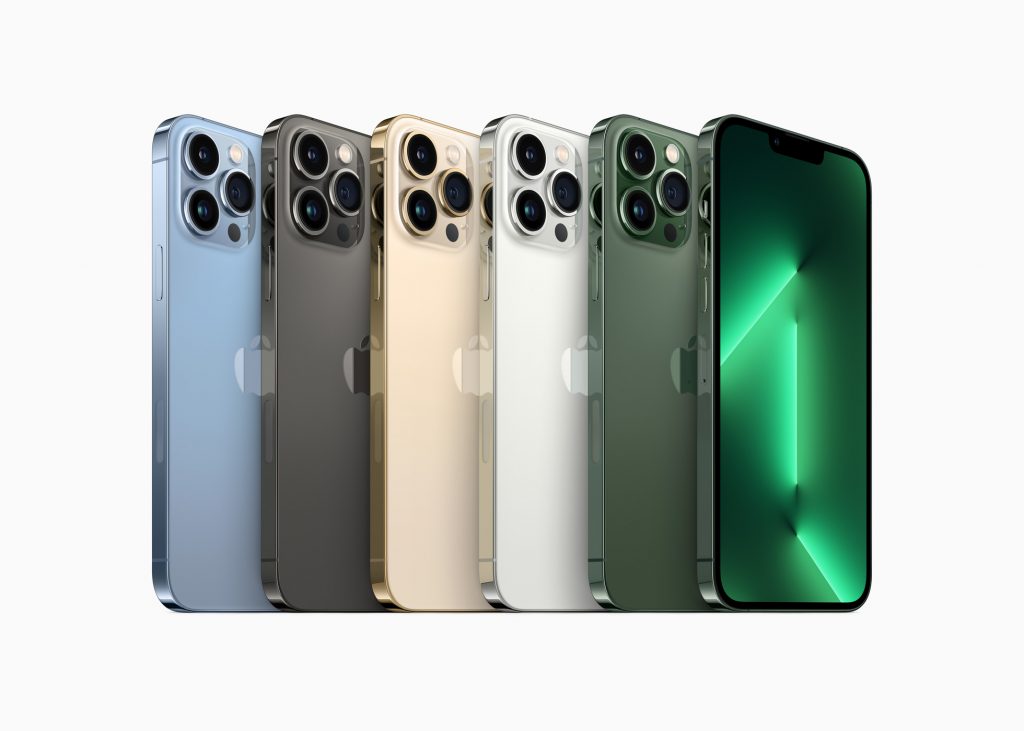
The iPhone 13 Pro Max is the most extensive and expensive iPhone 13 model. The iPhone 13 Pro Max has a slightly higher-resolution OLED display and a longer battery life. As with previous “Pro” iPhone models, the new iPhone 13 Pro Max models boast various features that distinguish them from more mainstream iPhone models. These include upgraded processors, 5G support, and improved camera capabilities. The iPhone 12 Pro models also feature a new 120Hz ProMotion display, MagSafe compatibility, an IP68 rating, a smaller display notch, and an improved front-facing speaker setup. One thing to note is continuing a recent controversy; there’s no charger in the box, just a Lightning to USB-C cable.
iPhone users have been asking for a bigger iPhone for years, and Apple finally delivered the iPhone 13 Pro Max. The iPhone 13 Pro Max features a massive 6.7-inch display. While the large display is excellent for watching videos and playing games, it comes at the expense of portability. The iPhone 13 Pro Max is difficult to fit in your pocket and even more challenging to use with one hand. Apple’s decision to stick with a 19.5:9 aspect ratio also means that the iPhone 13 Pro Max is much broader than competing flagships from Samsung and other manufacturers.
iPhone 13 Pro Max is the newest iPhone release and has some great features. One of the most impressive features is its IP68 rating against dust and water resistance. This means that your iPhone will be protected against everyday wear and tear, as well as any accidental drops in water. The iPhone 13 Pro Max also has marginally better-sounding front-facing Dolby Atmos speakers than the iPhone 12 Pro range. This means you’ll enjoy superior sound quality when listening to music, watching videos, or playing games on your iPhone. The only downside to the iPhone 13 Pro Max’s speakers is that they aren’t crystal clear at the low end. However, the stereo presentation is still good overall. If you’re into wireless audio, Apple doesn’t support fancy Bluetooth codecs like aptX and LDAC. But AAC will still serve most headphones well enough.
iPhone 14 Series 2022
The sixteenth generation of iPhones, following the iPhone 13 and iPhone 13 Mini. These new models were unveiled at an Apple Event held at Apple Park, Cupertino, California on September 7, 2022, along with their pricier siblings, the iPhone 14 Pro and iPhone 14 Pro Max.
The iPhone 14 and 14 Plus come with 6.1-inch and 6.7-inch displays respectively, enhanced rear-facing cameras, and an amazing feature – satellite connectivity for emergency services when Wi-Fi or cellular networks can’t reach you. The iPhone 14 hit the market on September 16, 2022, followed by the iPhone 14 Plus on October 7, 2022. They both come out of the box with iOS 16. Pre-orders for these models began on September 9, 2022.
Interestingly, the iPhone 14 and 14 Plus, along with the 14 Pro and 14 Pro Max, are the last iPhones to sport a Lightning port.
And if you’re wondering, there’s no ‘Mini’ version this time around. Instead, Apple brought back the larger ‘Plus’ model with the iPhone 14 Plus, something we haven’t seen since the iPhone 8 Plus in 2017.
Also, for the first time since the CDMA variant of the iPhone 4, the new iPhone models sold in the United States won’t support physical SIM cards, opting for eSIM technology instead.
Emergency SOS Via Satellite
Apple’s latest feature on the iPhone 14 and 14 Pro models was a game-changer – it’s called Emergency SOS via satellite.
Here’s how it works: when you send an Emergency SOS request, it’s picked up by an orbiting satellite. These aren’t just any satellites, they’re operated by Globalstar and use the L and S bands that are specially set aside for mobile satellite services.
And guess what? As of November 2022, Globalstar has 25 of these satellites in low Earth orbit, and they’re planning to add even more thanks to their partnership with Apple.
Now, let’s talk availability. The service first launched in the US and Canada on November 15, 2022. Not long after, on December 13, it was rolled out in the UK, Germany, Ireland, and France. And as of May 15, 2023, iPhone owners in Australia and New Zealand can also use this feature.
So, wherever you are with your beloved iPhone, you’ll always have a lifeline.
Crash Detection
The iPhone 14 introduced a new feature called Crash Detection. This feature is designed to detect severe car crashes in passenger vehicles. When the device senses that the owner might have been involved in a serious accident and is unresponsive, it automatically places an emergency call.
Crash Detection uses an array of sensors on the device to determine if a crash has occurred. If it identifies a severe crash, it can send notifications to emergency services via the Emergency SOS via satellite system, which is available on all iPhone 14 models and later.
This feature is turned on by default, but you can choose to turn off these alerts and automatic calls from Apple after a severe car crash in your phone’s settings. Go to Settings > Emergency SOS to manage this feature.
However, while the feature has reportedly helped save lives, there have been instances where it has falsely triggered emergency calls. For instance, it may accidentally activate during activities like riding a roller coaster.
Remember that while this feature can be a lifesaver in certain situations, it’s always important to ensure your safety on the road and not rely solely on technology.
iPhone 14 And iPhone 14 Plus
Let’s talk about the iPhone 14 and 14 Plus.
Storage
These beauties come in three storage options: 128, 256, and 512 GB – plenty of space for all your apps, photos, and videos! And guess what? They’ve got 6GB of RAM, which is a step up from the 4GB in the iPhone 13 and 13 mini models.
Design
The design of the iPhone 14 and iPhone 14 Plus mirrors that of the iPhone 13, with one noticeable difference – the U.S. models do not include a physical SIM tray.
Colours
In terms of colour options, the iPhone 14 and iPhone 14 Plus are offered in six vibrant shades: Blue, Purple, Midnight, Starlight, Yellow, and Product Red. The Purple variant replaces the Pink color from the iPhone 13 and iPhone 13 Mini series. Additionally, Apple introduced a Yellow option to the lineup on March 7, 2023.
Just like their predecessors, these phones have an IP68 rating, so they’re resistant to dust and water.
Chipset
Under the hood, you’ll find the Apple-designed A15 Bionic chip. This little powerhouse, made with 5-nanometer technology, packs a 6-core CPU, 5-core GPU, and a whopping 16-core Neural Engine. It’s identical to the A15 in the iPhone 13 Pro and 13 Pro Max from 2021, but it has more memory and an extra GPU core compared to the non-Pro iPhone 13 models.
Cameras
The iPhone 14 has the same set-up as before, with one front-facing camera (12MP f/1.9) and two on the back – a wide (12MP f/1.5) and ultra-wide (12MP f/2.4) camera. Both the wide and front-facing cameras have a faster aperture than the iPhone 13, giving you better low-light performance. And here’s a first: the front-facing camera now has autofocus!
Apple has taken its camera game to the next level with the latest Smart HDR 4 engine on the iPhone 14. This new feature allows you to choose from different photographic styles, such as rich contrast, vibrant, warm, and cool, for a more personalized photo experience. Unlike filters, these styles are intelligently integrated with the image processing algorithm during capture, resulting in local adjustments to your image that are permanently embedded into your photos.
But that’s not all. The camera app now includes a Cinematic Mode. This feature lets you shift focus between subjects and simulate a shallow depth of field using software algorithms. It’s available on both the wide and front-facing cameras and supports 4K resolution at both 30 and 60 frames per second.
Adding to the list of upgrades is the new ‘action mode’ feature. This extends the electronic video stabilization by reading out a smaller crop of the image sensor when recording video. While this does reduce the field of view, it uses a larger area around the crop as a buffer against shakes. The area read out from the image sensor moves between frames to counteract any hand movements, giving you smoother, more stable videos.
iPhone 14
Slogan: Big and bigger. Wonderfull.
Release date: September 16, 2022

The iPhone 14 boasts a 6.1-inch Super Retina XDR OLED display with a resolution of 2532 × 1170 pixels, equivalent to around 460 PPI. It offers a refresh rate of 60 Hz, typical brightness up to 800 nits, and max brightness up to 1200 nits. Its larger sibling, the iPhone 14 Plus, steps up the game with a 6.7-inch display of the same technology but at a higher resolution of 2778 × 1284 pixels, which translates to about 458 PPI.
In terms of size, the iPhone 14 measures 146.7 mm in height, 71.5 mm in width, and 7.8 mm in depth, and tips the scales at 172 grams. iPhone 14 cases here
iPhone 14 Plus
Slogan: Big and bigger. Wonderfull.
Release date: September 16, 2022

The iPhone 14 Plus comes with a 6.7-inch (170 mm) Super Retina XDR OLED display, supplied by Samsung Display. The screen resolution stands at 2778 x 1284 pixels with a 19.5:9 aspect ratio, giving you a pixel density of approximately 458 PPI. It supports HDR10 and Dolby Vision, with a typical brightness of 800 nits that can peak up to 1200 nits.
When it comes to its size, the iPhone 14 Plus measures 160.8 mm in height, 78.1 mm in width, and 7.8 mm in depth. It weighs in at a comfortable 203 grams (7.2 ounces).
Underneath the hood, the iPhone 14 Plus is powered by a 16.68 Wh (4325 mAh) Li-ion battery, ensuring you have enough juice to power through your day. View our iPhone 14 Plus cases and accessories here.
iPhone 14 Pro And iPhone Pro Max
Chipset
The iPhone 14 Pro and Pro Max come equipped with the latest A16 Bionic system on a chip (SoC). This new chip, fabricated using TSMC’s N4 process, replaces the A15 Bionic found in the iPhone 13 and 13 Pro series, the third-generation iPhone SE, as well as the iPhone 14 and 14 Plus.
Colours
The iPhone 14 Pro and 14 Pro Max come in a tasteful palette of four distinct colours to cater to different personal preferences. These colour options encompass the classic Silver, the sleek Space Black, the luxurious Gold, and the fresh addition of Deep Purple. Notably, the Deep Purple variant has taken the place of the Sierra Blue colour that was previously offered with the iPhone 13 Pro and iPhone 13 Pro Max.
Storage
In terms of storage capacity, both the iPhone 14 Pro and 14 Pro Max offer a wide range of options to suit various user needs. For those with moderate storage needs, there are the 128GB and 256GB versions.
However, for users who require more space for their extensive collection of apps, photos, videos, and other files, they can opt for the larger 512GB or the massive 1TB versions. The availability of such diverse storage capacities ensures that every user can find a model that perfectly aligns with their usage patterns and storage requirements.
Display
The iPhone 14 Pro and Pro Max are equipped with a Super Retina XDR OLED display that typically reaches a maximum brightness of 1,000 nits. This can escalate to 1,600 nits during HDR video playback and even 2,000 nits in outdoor settings. The display employs LTPO technology and offers a refresh rate of 120 Hz. The iPhone 14 Pro boasts a resolution of 2556×1179 pixels, equating to 460 ppi, while the Pro Max variant offers a slightly higher resolution of 2796×1290 pixels, also at 460 ppi.
Both models introduce an “always on display” feature, complemented by an adaptive ProMotion 120 Hz refresh rate that can drop down to 1 Hz, thereby conserving battery life when in “always on” mode.
Design
In terms of design, both variants showcase a fresh approach to the area surrounding the front-facing camera, previously known as the “TrueDepth camera array” or more colloquially, the “notch”. Apple has now christened this the “Dynamic Island”, a pill-shaped cutout slightly separated from the top edge of the screen.
This redesign was made possible by relocating components such as the Face ID hardware, ambient light sensor, flood illuminator, and proximity sensor from the “notch” to behind the display. To ensure a seamless integration between hardware and software, the pill shape is designed to adapt its shape and size according to the app or feature in use, allowing it to display alerts and notifications in a more user-friendly manner.
Cameras
The iPhone 14 Pro models have seen significant enhancements to the camera sensors and lenses on their main and ultra-wide cameras. The primary camera now comes equipped with a new 48-megapixel quad-pixel sensor, which is 65% larger than its predecessor in the iPhone 13 Pro. By default, it captures images at 12 megapixels via a process known as pixel binning. However, users can tap into the full potential of the sensor by enabling the ProRAW feature. The ultra-wide camera boasts a larger 12-megapixel sensor that includes 100% focus pixels, while the lens has been upgraded for superior optical clarity and a larger aperture.
The revamped camera system also introduces a new “Photonic Engine” to enhance image and video quality. In terms of video capabilities, the Action Mode feature provides video stabilization accessible from the top right corner of the screen, and allows customization of the picture resolution. The TrueDepth camera has been upgraded with autofocus and a larger aperture, and is now able to focus on multiple subjects at once.
iPhone 14 Pro
Slogan: Pro. Beyond.
Release date: September 16, 2022

The iPhone 14 Pro boasts a display that measures 6.1 inches (or 155 mm), offering a resolution of 2556 x 1179 pixels. This leads to a 19.5:9 ratio and a pixel density of approximately 460 ppi, ensuring crisp and clear visuals for users. The device utilizes a Super Retina XDR OLED screen, supporting HDR10 technology. With typical brightness reaching up to 1,000 nits and peak brightness soaring to 2,000 nits, the display ensures vibrant colors and deep blacks for an immersive viewing experience. Notably, this high-quality display is supplied by Samsung Display, a renowned name in the industry.
In terms of dimensions, the iPhone 14 Pro is designed with portability and ease of handling in mind. It stands at a height of 147.5 mm (or 5.81 inches), a width of 71.5 mm (or 2.81 inches), and a depth of just 7.85 mm (or 0.309 inches). This compact design makes it comfortable to hold and easy to carry around.
Powering the iPhone 14 Pro is a robust 3200 mAh battery, which offers impressive longevity. Users can enjoy up to 23 hours of video playback on a single charge, perfect for those long-haul flights or binge-watching sessions. Additionally, the device supports up to 20 hours of streaming video playback, allowing users to stream their favorite shows, movies, or live events without worrying about battery depletion. This combination of a powerful display, compact design, and long-lasting battery makes the iPhone 14 Pro a compelling choice for tech enthusiasts seeking both performance and convenience. Check out our iPhone 14 Pro cases.
iPhone 14 Pro Max
Slogan: Pro. Beyond.
Release date: September 16, 2022

The iPhone 14 Pro Max is a true gem in the realm of smartphones, boasting a large 6.7-inch (or 170 mm) Super Retina XDR OLED display. This sizable screen provides a resolution of 2796 x 1290 pixels, leading to a 19.5:9 aspect ratio and a pixel density of approximately 460 ppi. These specifications ensure an outstanding visual experience with crisp details and vibrant colors.
The display supports HDR10 technology and features a typical brightness level of 1,000 nits, which can peak at 2,000 nits for optimal viewing even in bright conditions. The screen components are supplied by two industry leaders, Samsung Display and LG Display, ensuring high-quality performance and durability.
When it comes to dimensions, the iPhone 14 Pro Max measures 160.7 mm (or 6.33 inches) in height, 77.6 mm (or 3.06 inches) in width, and has a slim profile with a depth of just 7.85 mm (or 0.309 inches). Despite its large screen, the device maintains a comfortable grip and portability, weighing in at 240 g (or 8.5 oz).
Under the hood, the iPhone 14 Pro Max houses a powerful 4323 mAh battery. This robust power source allows for impressive usage times, providing up to 29 hours of video playback and up to 25 hours of streaming video playback on a single charge. This makes the iPhone 14 Pro Max an ideal choice for those who demand long-lasting battery life for uninterrupted entertainment or productivity tasks. View our iPhone 14 Pro Max cases.
iPhone 15 Series

The year 2023 heralds a significant shift for Apple as it transitions from the traditional Lightning port to a more universally compatible USB-C port. This move not only simplifies the charging process but also enhances compatibility with other devices in your technological ecosystem. Additionally, the new devices come packed with several other noteworthy enhancements.
iPhone 15 USB-C
The iPhone 15 and iPhone 15 Plus are equipped with a USB-C port that supports USB 2.0 transfer speeds, capable of reaching up to 480 Mb/s or 60MB/s.
On the other hand, the iPhone 15 Pro and iPhone 15 Pro Max take data transfer to a whole new level, leveraging USB 3.2 Gen 2 technology to offer transfer speeds of up to 10Gb/s or 1.25GB/s. These four models notably mark the first time in iPhone history that USB-C has been adopted, and they represent the first major shift in charging port technology since the introduction of the iPhone 5.
All iPhone 15 models support DisplayPort Alternate Mode over USB-C video output. This feature allows for HDR video output at resolutions up to 4K, providing a vastly superior viewing experience.
Prior to this, iPhone models from the iPhone 5 through the iPhone 14 were limited to a maximum resolution of 1600 x 900 (slightly less than 1080p) when using the Lightning Digital AV Adapter. This was due to the technical limitations inherent to the Lightning connector. With the adoption of USB-C, these restrictions have been lifted, paving the way for greater visual clarity and detail.
iPhone 15 And iPhone 15 Plus
The iPhone 15 and iPhone 15 Plus are the latest additions to Apple’s illustrious lineup.
Colours
These models come in a vibrant range of colours, giving users the option to choose from Black, Blue, Green, Yellow, or Pink. This variety allows users to select a shade that best aligns with their personal style and preference.
Design
In terms of design, both the iPhone 15 and iPhone 15 Plus feature an aluminium frame, ensuring durability without compromising on aesthetics. The front is protected by a Ceramic Shield, designed to offer increased resistance to damage, while the back is made of color-infused glass, adding depth and richness to the overall look of the devices.
Storage
Storage won’t be an issue with these models as they come with ample capacity options of 128GB, 256GB, or 512GB. These options cater to a wide range of user needs, whether it’s for storing numerous apps, high-resolution photos, videos, or large files.
Display
When it comes to display, both the iPhone 15 and iPhone 15 Plus boast a Dynamic Island and HDR display. This is complemented by True Tone technology, which adjusts the color temperature based on ambient light, and Wide Color (P3) support, offering a broader spectrum of colours for more lifelike visuals. Haptic Touch provides tactile feedback for various actions, enhancing the user interaction experience.
These models have a high contrast ratio of 2,000,000:1 (typical), allowing for deep blacks and bright whites. They also feature impressive brightness levels, with a maximum of 1,000 nits (typical), peaking at 1,600 nits for HDR content and even reaching 2,000 nits for outdoor use.
A fingerprint-resistant oleophobic coating helps keep the screen clean and clear, while support for displaying multiple languages and characters simultaneously caters to a diverse user base.
Water Resistance
In terms of durability, these devices are splash, water, and dust resistant, rated IP68 under IEC standard 60529. This means they can withstand submersion in up to 6 meters of water for a duration of up to 30 minutes, making them suitable for use in various weather conditions and environments.
Chipset
The iPhone 15 and iPhone 15 Plus are powered by the powerful A16 Bionic chip. This advanced chip features a 6-core CPU that includes two high-performance cores for demanding tasks and four efficiency cores to handle everyday tasks while conserving battery life.
Accompanying the CPU is a 5-core GPU that handles graphic-intensive tasks like gaming and video editing with ease. The devices also house a 16-core Neural Engine, designed to accelerate machine learning tasks, enhancing performance across a wide array of applications.
Cameras
When it comes to photography, the iPhone 15 and iPhone 15 Plus are equipped with an advanced dual-camera system. The 48MP Main camera has a 26mm focal length and a large ƒ/1.6 aperture, offering sensor-shift optical image stabilisation and 100% Focus Pixels. This setup supports super-high-resolution photos of 24MP and 48MP, capturing stunning detail in every shot.
The 12MP Ultra Wide camera, with its 13mm focal length, ƒ/2.4 aperture, and 120° field of view, allows for expansive landscape shots and group photos. Additionally, a 12MP 2x Telephoto lens, enabled by a quad-pixel sensor, offers a 52mm focal length, ƒ/1.6 aperture, sensor-shift optical image stabilisation, and 100% Focus Pixels for sharp and clear zoomed-in shots.
The camera system provides 2x optical zoom in and out, giving a 4x optical zoom range, and digital zoom up to 10x. The lenses are protected by a Sapphire crystal lens cover for durability, and a True Tone flash ensures well-lit photos in low-light conditions.
The Photonic Engine enhances image processing, and Deep Fusion technology analyzes and combines multiple exposures for optimal detail and texture. Smart HDR 5 ensures excellent dynamic range in photos, while next-generation portraits with Focus and Depth Control create professional-looking shots.
The camera system also includes Portrait Lighting with six effects, Night mode for low-light photography, a Panorama mode that can capture images up to 63MP, and Photographic Styles that let you customize the look of your photos. Wide color capture ensures vibrant photos and Live Photos, lens correction improves the Ultra Wide camera’s output, and advanced red-eye correction fixes common photo issues.
Additional features include Auto image stabilisation for steady shots, Burst mode for action photography, and photo geotagging for location information. The devices support HEIF and JPEG image formats, providing flexibility in how you store and share your photos.
iPhone 15
Slogan: Newphoria.
Release date: September 22, 2023

The iPhone 15 boasts a remarkable display that elevates the user’s visual experience. It features a 6.1-inch (155 mm) display with Super Retina XDR OLED technology, which is known for its vibrant colors and sharp details. The resolution of this display stands at 2556×1179 pixels, with a pixel density of around 460 PPI. This ensures that every image and video you view on the device is clear and lifelike.
Adding to the display’s excellence is its refresh rate of 60 Hz. This feature significantly improves the smoothness of animations and scrolling. The brightness level of the iPhone 15 has also been enhanced, with a typical brightness of up to 1,000 nits, a peak HDR brightness of up to 1,600 nits, and a peak outdoor brightness of up to 2,000 nits. This ensures optimal visibility under all lighting conditions.
The Dynamic Island feature is another notable aspect of the iPhone 15. Now standard on this model, it replaces the notch that was first introduced in the iPhone 13. This feature contributes to a more immersive and uninterrupted viewing experience.
As for charging and data transfer speeds, the iPhone 15 uses USB-C with USB 2.0 transfer speeds. This allows for data transfer rates of up to 480 Mb/s or 60 MB/s. Furthermore, the device offers up to 20 hours of video playback and up to 80 hours of audio playback, ensuring long-lasting entertainment.
In terms of dimensions, the iPhone 15 measures 147.6 mm (5.81 in) in height, 71.6 mm (2.82 in) in width, and 7.8 mm (0.31 in) in depth. Despite these compact dimensions, it weighs only 171 grams (6.0 oz), making it lightweight and convenient to carry around.
The iPhone 15 is available in various storage options: 128 GB, 256 GB, and 512 GB. This allows users to choose a model that best matches their storage needs.
Lastly, the device is available in several colours, Blue, Pink, Yellow, Green and Black adding to its aesthetic appeal. See our iPhone 15 cases and accessories
iPhone 15 Plus
Slogan: Newphoria.
Release date: September 22, 2023

The iPhone 15 Plus is a marvel of technology, boasting an impressive display that ensures a top-notch visual experience. It comes with a larger 6.7-inch (170 mm) display, utilizing the same Super Retina XDR OLED technology as its smaller counterpart.
This screen offers a resolution of 2796×1290 pixels and a pixel density of approximately 460 PPI. These specifications guarantee vivid colors and sharp details in every image and video viewed on the device.
The brightness levels of the iPhone 15 Plus have also been significantly enhanced. Both the iPhone 15 and 15 Plus have an improved typical brightness of up to 1,000 nits, a peak HDR brightness of up to 1,600 nits, and a peak outdoor brightness of up to 2,000 nits. This ensures that the display remains clear and easy to view even under bright sunlight.
The Dynamic Island feature is another key highlight of the iPhone 15 Plus. Now standard on this model, it replaces the traditional notch, offering users a more immersive and uninterrupted viewing experience.
In terms of charging and data transfer, the iPhone 15 Plus uses USB-C with USB 2.0 transfer speeds. This allows for fast data transfer rates of up to 480 Mb/s or 60 MB/s. The device also provides extended entertainment time, with up to 26 hours of video playback and up to 100 hours of audio playback.
The dimensions of the iPhone 15 Plus are slightly larger than those of the iPhone 15, measuring 160.9 mm (6.33 in) in height, 77.8 mm (3.06 in) in width, and 7.8 mm (0.31 in) in depth. Despite its larger size, it weighs only 201 grams (7.1 oz), making it relatively lightweight and easy to handle.
Finally, the iPhone 15 Plus is available in a variety of storage options: 128 GB, 256 GB, and 512 GB. This allows users to choose the model that best suits their storage needs. In terms of colour choices, there are choices of Blue, Pink, Yellow, Green and Black. See our iPhone 15 Plus cases and accessories
iPhone 15 Pro And iPhone 15 Pro Max
The iPhone 15 Pro and iPhone 15 Pro Max succeed the iPhone 14 Pro and iPhone 14 Pro Max.
In terms of design, these new models come with a significant change in the materials used for the enclosure. Unlike the stainless steel frame of previous Pro models, the iPhone 15 Pro and iPhone 15 Pro Max are made of grade 5 titanium.
Apple has also managed to reduce the display bezels from 2.2 mm to 1.55 mm, giving the devices a sleeker and more modern look. The phones are available in four distinct colours: natural titanium, blue titanium, white titanium, and black titanium.
On the hardware front, like the iPhone 15 and 15 Plus, the 15 Pro and Pro Max have replaced the proprietary Lightning connector with USB-C. This change is in compliance with the European Union mandates. Furthermore, the iPhone 15 Pro and Pro Max support AV1 video hardware decoding, which enhances video playback performance and quality.
The chipset used in these devices is another highlight. The iPhone 15 Pro and Pro Max feature the A17 Pro system on a chip (SoC), built on TSMC’s N3B fabrication process. The chipset includes an Apple-redesigned graphic processing unit (GPU) with hardware-accelerated ray tracing.
This advanced GPU allows games originally designed for consoles and PCs, such as Resident Evil Village and Assassin’s Creed Mirage, to be played on iOS.
When it comes to charging and data transfer, the iPhone 15 Pro and iPhone 15 Pro Max use USB-C with USB 3.2 Gen 2 transfer speeds. This allows for estimated data transfer rates of up to 10 Gbps or 1.25 GBps, providing users with speedy data transfer and charging capabilities.
Finally, the iPhone 15 Pro and iPhone 15 Pro Max introduce a new feature: the Action button. This button replaces the traditional mute switch found on previous models. The function of the Action button can be configured by the user. By default, the Action button toggles silent mode. However, users can also set it to open the camera, record a voice memo, or toggle a focus mode, offering greater personalization and convenience.
iPhone 15 Pro
Slogan: So strong. So light. So Pro.
Release date: September 22, 2023

The iPhone 15 Pro is an exemplar of Apple’s commitment to technology and design excellence. It boasts a 6.1-inch (155 mm) screen that utilizes Super Retina XDR OLED technology, supplied by Samsung Display. This state-of-the-art display features a resolution of 2556 × 1179 pixels with a 19.5:9 aspect ratio, ensuring a pixel density of approximately 460 PPI. The screen also supports 120 Hz refresh rate and HDR10, offering a typical brightness of up to 1000 nits and a peak brightness of 2000 nits. These impressive specifications guarantee a vibrant, detailed, and smooth visual experience for users.
In terms of data transfer and charging capabilities, the iPhone 15 Pro is also ahead of the curve. It utilizes USB-C with USB 3.2 Gen 2 transfer speeds. This allows for estimated data transfer rates of up to 10 Gbps or 1.25 GBps, considerably faster than many other smartphones on the market. Additionally, the device houses a 12.70 Wh (3274 mAh) Li-ion battery, providing a substantial power reserve to support its advanced features.
The dimensions and weight of the iPhone 15 Pro further enhance its appeal. The device measures 146.6 mm (5.77 in) in height, 70.6 mm (2.78 in) in width, and 8.25 mm (0.325 in) in depth. Despite its large screen and numerous features, it weighs just 187 grams (6.6 oz), making it both compact and lightweight for easy portability.
Finally, the iPhone 15 Pro offers a wide range of storage options to cater to different user needs. These include 128 GB, 256 GB, 512 GB, and even a massive 1 TB NVMe, allowing users to store a vast amount of data, apps, and multimedia. The device is also available in a variety of stylish colors: natural titanium, blue titanium, white titanium, and black titanium, giving users the freedom to choose the look that best suits their personal style. See our iPhone 15 Pro cases and accessories.
iPhone 15 Pro Max
Slogan: So strong. So light. So Pro.
Release date: September 22, 2023

The iPhone 15 Pro Max is a standout addition to Apple’s lineup, exhibiting superior technology and design. The device features a large 6.7-inch (170 mm) screen with a resolution of 2796 × 1290 pixels and a 19.5:9 aspect ratio, translating into a pixel density of approximately 460 PPI. The Super Retina XDR OLED display, supplied by Samsung Display, supports a 120 Hz refresh rate and HDR10, delivering a typical brightness of up to 1000 nits and a peak brightness of 2000 nits. These specifications ensure a rich, detailed, and smooth visual experience for users.
When it comes to data transfer and charging capabilities, the iPhone 15 Pro Max doesn’t disappoint. It incorporates USB-C with USB 3.2 Gen 2 transfer speeds, allowing for estimated data transfer rates of up to 10 Gbps or 1.25 GBps. This is significantly faster than many other smartphones available in the market. Additionally, the iPhone 15 Pro Max is powered by a hefty 17.32 Wh (4441 mAh) Li-ion battery, providing an extensive power reserve to support its advanced features.
In terms of dimensions, the iPhone 15 Pro Max is slightly larger than the iPhone 15 Pro, measuring 159.9 mm (6.30 in) in height, 76.7 mm (3.02 in) in width, and 8.25 mm (0.325 in) in depth. Despite its larger size, the device is designed to be user-friendly and easy to handle.
The storage options offered by the iPhone 15 Pro Max are quite generous, catering to various user needs. Options include 256 GB, 512 GB, and an enormous 1 TB NVMe. This allows users to store a vast amount of data, apps, and multimedia files.
Finally, the iPhone 15 Pro Max is available in a range of stylish colors: natural titanium, blue titanium, white titanium, and black titanium, enabling users to choose something that matches their personal style. See our iPhone 15 Pro Max cases and accessories
iPhone 16
Slogan:
Release date: September 20, 2024
The iPhone 16 and iPhone 16 Plus are smartphones designed, developed, and marketed by Apple Inc. The devices were unveiled alongside the higher-priced iPhone 16 Pro and 16 Pro Max at an Apple Special Event held at Apple Park in Cupertino, California on September 9, 2024.
They represent the eighteenth generation of iPhones, succeeding the iPhone 15 and iPhone 15 Plus. Pre-orders for these new devices are scheduled to begin on September 13, 2024.
iPhone 16
Colours
The iPhone 16 will be available in five new colours, including Pink, Black, Ultramarine, Teal and White.
Display
The iPhone 16 boasts a 6.1-inch screen and features a slightly taller aspect ratio. This change is due to the shift from 16:5:9 to an 11:6 ratio.
Hardware
The iPhone 16 is powered by the new A18 chip, custom-designed for this device. This chip is optimized for running large generative models, featuring a neural engine that is twice as fast as its predecessor. Additionally, the iPhone 16 is equipped with a new 48-megapixel camera, offering four times the resolution of the iPhone 14. The new ultrawide camera allows for more light capture in low-light situations and features automatic focus. Furthermore, every model in the iPhone 16 lineup supports WiFi 7.
Enclosure
The iPhone 16’s enclosure is made up of 85% recycled content, showcasing Apple’s commitment to sustainability.
Latest posts by Campad Electronics (see all)
- Apple Launches iPhone 16e - February 21, 2025
- Create a Wireless Charging Surface at Home for Less Than $50 - July 9, 2024
- Meet The Telstra 5G Hotspot - May 22, 2024

 Follow
Follow
